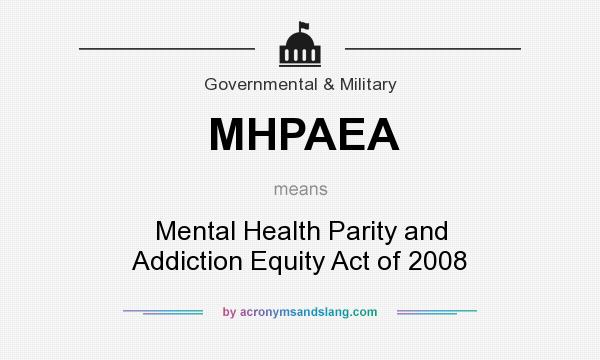All about How Can Alcohol Affect Your Mental Health
Individuals can experience various types of mental disorders or disorders, and they can typically happen at the same time. Mental diseases can take place over a short amount of time or be episodic. This means Take a look at the site here that the mental disorder reoccurs with discrete beginnings and ends. Mental disorder can also be ongoing or lasting.
A few of the main types of mental disorder and disorders are noted below; however, this list is not exhaustive. Individuals with anxiety conditions react to certain items or circumstances with fear and dread or fear. Stress and anxiety disorders consist of generalized stress and anxiety disorder, social anxiety, panic attack, and fears. Attention-deficit/hyperactivity condition (ADHD) is among the most common youth mental illness.
Individuals diagnosed with ADHD might have difficulty focusing, managing impulsive behaviors (might act without considering what the outcome will be), or be overly active. Behavioral disorders involve a pattern of disruptive behaviors in children that last for a minimum of 6 months and cause issues in school, in the house, and in social situations.
While tiffs prevail, and typically pass in a brief duration, people suffering from mood conditions deal with more consistent and severe symptoms. People living with this mental disorder find that their state of mind effects both psychological and psychological well-being, nearly every day, and typically for much of the day.
With proper medical diagnosis and treatment, most of those living with Drug Detox state of mind disorders lead healthy, typical and efficient lives. If left unattended, this health problem can affect role performance, quality of life and numerous long-lasting physical health issues such as diabetes and heart illness. Eating disorders involve compulsive and sometimes distressing ideas and habits, consisting of Decrease of food consumption Overeating Sensations of depression or distress Issue about weight, body shape, poor self-image Typical types of eating disorders consist of anorexia, bulimia, and binge eating.
Personality conditions include antisocial personality disorder and borderline character disorder. A person can get PTSD after living through or seeing a traumatic occasion, such as war, a typhoon, physical abuse, or a severe mishap. PTSD can make someone feel stressed and scared after the threat is over. Individuals with PTSD may experience symptoms like reliving the occasion over and over, sleep issues, become extremely upset if something triggers memories of the event, continuously looking for possible threats, and modifications in feelings like irritability, outbursts, vulnerability, or feelings of tingling (how to take care of mental health).

The smart Trick of What Is A Generally Accepted Criterion Of Mental Health? That Nobody is Talking About
They may likewise reveal indications of disorganized thinking, confused speech, and muddled or abnormal motor habits. An example of a psychotic disorder is schizophrenia. Individuals with schizophrenia may also have low motivation and blunted emotions. Compound use conditions occur when frequent or repeated usage of alcohol and/or drugs causes substantial impairment, such as health issues, special needs, and failure to meet significant duties at work, school, or house.

Examples include intoxicated driving fatalities and drug overdoses. Mental health problems and substance use disorders frequently happen together. Sometimes one condition can be a contributing aspect to or can make the other even worse. In some cases they simply take place at the very same time.
Mental health describes cognitive, behavioral, and emotional wellness (what is clinical mental health counseling). It is everything about how people believe, feel, and behave. People in some cases utilize the term "mental health" to mean the absence of a mental disorder. Mental health can impact daily living, relationships, and physical health. Nevertheless, this link likewise works in the other instructions.
Taking care of mental health can maintain a person's capability to take pleasure in life. Doing this includes reaching a balance between life activities, duties, and efforts to accomplish mental durability. Conditions such as stress, anxiety, and anxiety can all impact psychological health and disrupt a person's regimen. how long does mental health first aid certification last. Although the term mental health is in typical usage, numerous conditions that doctors acknowledge as psychological conditions have physical roots.
We likewise explain the most typical kinds of psychological conditions, including their early signs and how to treat them. Mental health disorders are among the leading reasons for impairment in the U.S.According to the World Health Company (WHO): "Mental health is a state of wellness in which an individual realizes his/her own abilities, can handle the typical tensions of life, can work productively, and is able to make a contribution to his or her neighborhood." The WHO stress that psychological health is "more than just the lack of psychological disorders or specials needs." Peak mental health has to do with not only preventing active conditions however also looking after continuous wellness and happiness.
In the United States, the National Alliance on Mental Illness quote that practically 1 in 5 adults experience mental health issues each year. In 2017, an approximated 11.2 million adults in the U.S., or about 4.5% of adults, had a severe psychological condition, according to the National Institute of Mental Health (NIMH). Everybody has some danger of establishing a mental health condition, no matter their age, sex, earnings, or ethnic background.
How Much https://waylondajn342.hatenablog.com/entry/2020/09/26/182019 Does Mental Health Counselors Make - Truths
and much of the developed world, psychological disorders are one of the leading causes of disability. Social and financial situations, biological factors, and way of life choices can all shape an individual's psychological health. A big percentage of individuals with a mental health condition have more than one condition at a time.
The list below factors may add to mental health disruptions. Having restricted monetary ways or coming from a marginalized or persecuted ethnic group can increase the danger of psychological health conditions. A 2015 study of 903 households in Iran determined several socioeconomic causes of psychological health conditions, including hardship and living on the borders of a big city.
Flexible aspects for mental health disorders include: socioeconomic conditions, such whether work is readily available in the local areaoccupationa person's level of social involvementeducationhousing qualityNonmodifiable elements consist of: The study lists gender as both a flexible and nonmodifiable aspect. The researchers found that being female increased the threat of low mental health status by 3.96 times.
The NIMH suggest that genetic family history can increase the probability of mental health conditions, as particular genes and gene variations put an individual at higher danger. Nevertheless, many other elements contribute to the advancement of these disorders. Having a gene with links to a mental health disorder, such as anxiety or schizophrenia, does not guarantee that a condition will develop.
Psychological health conditions such as stress, depression, and stress and anxiety may establish due to underlying, life-changing physical health issue, such as cancer, diabetes, and chronic pain. The most typical kinds of psychological illness are as follows: According to the Stress And Anxiety and Anxiety Association of America, anxiety conditions are the most common type of mental disorder.
Many individuals with an anxiety condition will try to prevent exposure to whatever triggers their stress and anxiety. Examples of anxiety disorders include: The American Psychiatric Association define GAD as out of proportion worry that disrupts everyday living. Individuals might likewise experience physical symptoms, includingrestlessnessfatiguetense musclesinterrupted sleepA bout of anxiety signs does not necessarily require a specific trigger in individuals with GAD.
Getting My Who Can Prescribe Mental Health Medication To Work
An individual with GAD might in some cases feel stress and anxiety with no trigger at all. People with a panic attack experience routine anxiety attack, which include sudden, overwhelming fear or a sense of imminent catastrophe and death. There are different types of phobia: These might include a disproportionate worry of particular things, circumstances, or animals.
